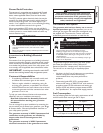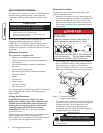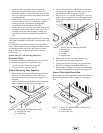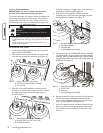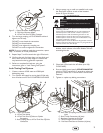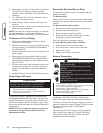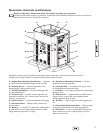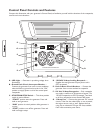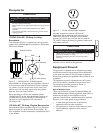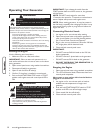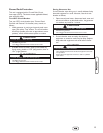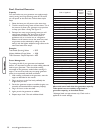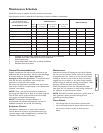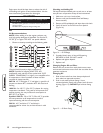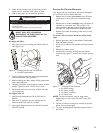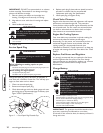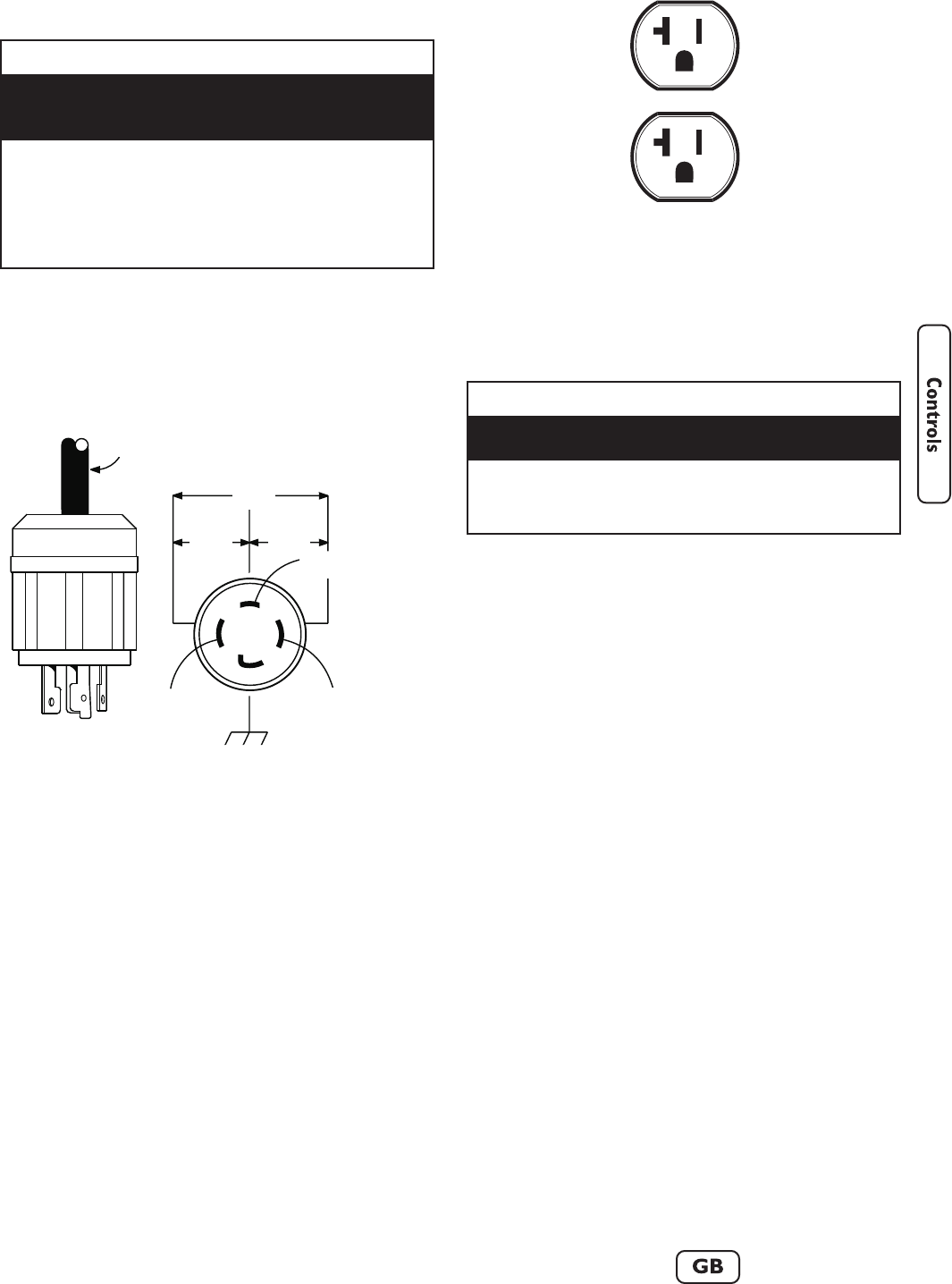
13
Receptacles
120/240 Volt AC, 30 Amp, Locking
Receptacle
This receptacle (Figure 11) supplies the entire generator
output and is protected against overload by a double-pole
GFCI circuit breaker.
Use a NEMA L14–30 plug with this receptacle. Connect a
4–wire cord set rated for 250 Volt AC loads at 30 Amps
(or greater). You can use the same 4–wire cord if you
plan to run a 120 Volt load. Inspect cord set(s) before
each use. Store cord set(s) indoors.
When operating on LP fuel, this receptacle powers
120/240 Volt AC, 60 Hz, single phase loads requiring up
to 7,000 watts of power (7.0 kW) at 29.16 Amps for
240 Volts or two independent 120 Volt loads at
29.16 Amps each.
120 Volt AC, 20 Amp, Duplex Receptacles
Each individual duplex receptacle (Figure 12) is protected
against overload by a push-to-reset circuit breaker. All
four receptacles are also protected by a double-pole GFCI
circuit breaker.
Use each receptacle to operate 120 Volt AC,
single–phase, 60 Hz electrical loads requiring up to
2,400 watts (2.4 kW) at 20 Amps of current when
operating on LP fuel. Use cord sets that are rated for
125 Volt AC loads at 20 Amps (or greater). Inspect cord
set(s) before each use.
NOTE: Follow all safety precautions when connecting any
extension cord or device to the generator.
Equipment Ground
The generator is equipped with an equipment grounding
terminal that connects the generator frame components
to the ground terminals on the AC output receptacles.
Ground the generator per applicable codes, standards, and
regulations.
The equipment ground is connected to the AC neutral
wire and the neutral is bonded to the generator frame.
The equipment grounding terminal is shown on
“Generator Controls and Features”.
Special Requirements
There may be Federal or State Occupational Safety and
Health Administration (OSHA) regulations, local codes, or
ordinances that apply to the intended use of the
generator. Please consult a qualified electrician, electrical
inspector, or the local agency having jurisdiction.
• In some areas, generators are required to be
registered with local utility companies.
• If the generator is used at a construction site, there
may be additional regulations which must be
observed.
• NEVER attempt to power a device requiring more amperage than
generator or receptacle can supply.
• DO NOT overload the generator. See “Don’t Overload
Generator”.
Receptacles may be marked with rating value greater
than generator output capacity.
CAUTION
• See “Don’t Overload Generator”.
• Start generator and let engine stabilize before connecting electrical
loads.
• Connect electrical loads in OFF position, then turn ON for
operation.
• Turn electrical loads OFF and disconnect from generator before
stopping generator.
Exceeding generators wattage/amperage capacity can
damage generator and/or electrical devices connected
to it.
CAUTION
Figure 11 — 120/240 Volt AC, 30 Amp Receptacle
4-Wire Cord Set
240V
120V
120V
W (Neutral)
X (Hot)
Y (Hot)
NEMA L14-30
Ground (Green)
Figure 12 — 120 Volt, 20 Amp Duplex Receptacle



